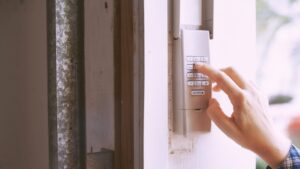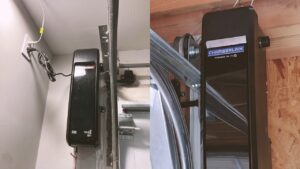Connect With A Garage Expert
Connect with local experts, Compare quotes, Get the best price.
If you’re looking to elevate the functionality of your garage by converting the garage door to an entry door, incorporating French doors can be a brilliant solution. This conversion not only enhances the aesthetic appeal of your home but also introduces a practical entry point that aligns with modern living standards.
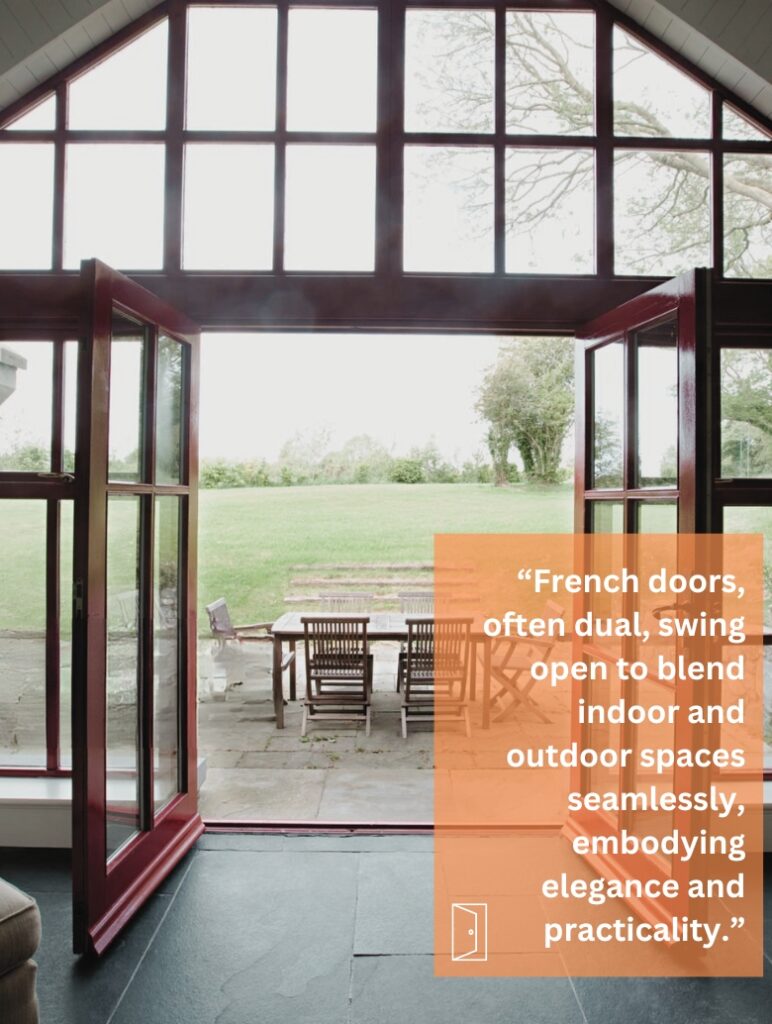
In this guide, we’ll explain everything you need to know about how to replace a garage door with French doors. Whether you choose a DIY approach, purchase a pre-fabricated set, or even craft your doors from scratch, our step-by-step guide is designed to simplify the journey.
How Do I Replace a Garage Door With French Doors?
Below is a step-by-step guide that you can follow to replace your garage door with French doors.
Step 1: Remove the Old Door
Removing the old garage door involves a few key steps:
- Safely disconnect and remove the motor, ensuring all power is off for safety.
- Release tension from the springs. Follow the instructions manual and take the necessary precautions. If your garage door has torsion springs, release tension and use a winding bar. Once the tension has been safely released, proceed to detach the lift cable from the cable drum. Next, use a socket wrench to release the tension on the cable drum. Finally, with careful movements, slide the torsion bar out of the torsion spring assembly to complete the process.
- Keep the garage door in place by holding it with C-clamps.
- Remove the door panels using a socket wrench.
- Lower each panel gently to avoid any sudden drops or damage. Have an assistant available to help support the weight as you detach each section. Move deliberately and communicate each step you are taking.
- Next, disconnect the rollers by removing the nuts and bolts.
- Unscrew the brackets carefully, as they might be under tension.
- Now detach the tracks, chains, and pulleys by unbolting them.
Pro Tip: This process requires careful handling and attention to safety, mainly when dealing with the door’s mechanical and electrical components.
Step 2: Measurements
After removing your old garage door, measure the garage door opening to order the correctly sized French door:
- Measure the width of the garage door opening at the top, middle, and bottom. Note the smallest measurement.
- Measure the height of the opening from the left, right, and center. Remember to take note of the smallest measurement to ensure accuracy.
- Measure the diagonals of the opening. If the diagonals are equal, the opening is square.
- Ensure there’s enough space on either side of the opening for the frame and other adjustments.
- Account for any obstructions that might interfere with the garage door and make necessary adjustments.
Note: You might need to construct a new wall or alter the existing one to accommodate the French doors.
Step 3: Installing the New Door
When it’s time to install the new door, make sure you have all your tools and materials close at hand before you begin.
Tools Needed
- Measuring tape
- level
- hammer
- screwdriver or drill
- shims
- adhesive and finishing nails or screws.
Steps for Installing a French Door
To install the new French door, follow these steps:
- Position the Pre-hung Door Frame: Place the frame from the outside of your house. Ensure it’s aligned correctly with the opening.
- Apply Adhesive: Run a bead of adhesive along the bottom of the opening, including the lower corners. Be cautious not to slide the door into place, as it could disrupt the adhesive.
- Attach Hinge Jambs: Center the hinge jambs within the door frame. Secure them using finished nails or screws.
- Level and Square Frame with Shims: Use shims to ensure the frame is level and square. Check alignment between studs and jambs.
- Ensure Door Panels are Level: Verify that the door panels are even at both the top and bottom for French doors. The gap between them, known as the reveal, should be consistent.
- Secure the Door: Use the long screws provided with the pre-hung doors to firmly secure the door in place. Follow up with finishing nails or additional screws for extra stability.
Structural Considerations
A load-bearing header is typically required to replace an exterior door. If the existing garage door header is sufficient, you may need to construct a secondary non-load-bearing wall with a double 2×4 lumber header.
Build the new frame with a sill plate, bottom plate, and studs spaced 16 inches apart, anchoring the sill and installing a top plate with studs on each side of the door.
Step 4: Finishing
Test the doors’ functionality by opening and closing them and ensuring there’s no contact between the frame and doors. If there is contact between the frame and doors:
- Check the alignment with a level.
- Adjust the hinges and reposition shims to correct any misalignment.
- As a last resort, consider trimming the door slightly. For persistent issues, consult a professional garage door technician.
Moreover, studs should be attached to the header and top plate to secure the French doors in place. Finish the junction of the new and old garage walls with a trim baseboard. You can also enhance the visual appeal with cement or wood cladding.
Connect With A Garage Expert
Connect with local experts, Compare quotes, Get the best price.
Factors to Consider When Converting Garage Doors to French Doors
When converting your garage door into French doors, you must consider the following key factors to ensure that your choice best suits your home and needs.
1. Style
Select a style that complements your home’s architecture. French doors come in various designs, from classic to modern. The right style enhances curb appeal and integrates seamlessly with your home’s aesthetic.
When selecting a style for French doors, the most popular choices include:
- Classic Style: Known for their timeless elegance, these doors often feature symmetrical designs with clear or frosted glass. They suit traditional home architecture and add a touch of sophistication.
- Modern Style: These doors favor minimalism, with clean lines and often larger glass panels. They work well with contemporary homes, offering a sleek, updated look.
Each style offers unique characteristics, appealing to different aesthetic preferences. Classic styles are favored for their enduring charm, while modern styles are chosen for their ability to give a space a fresh, chic update.
2. Maximizing Natural Light
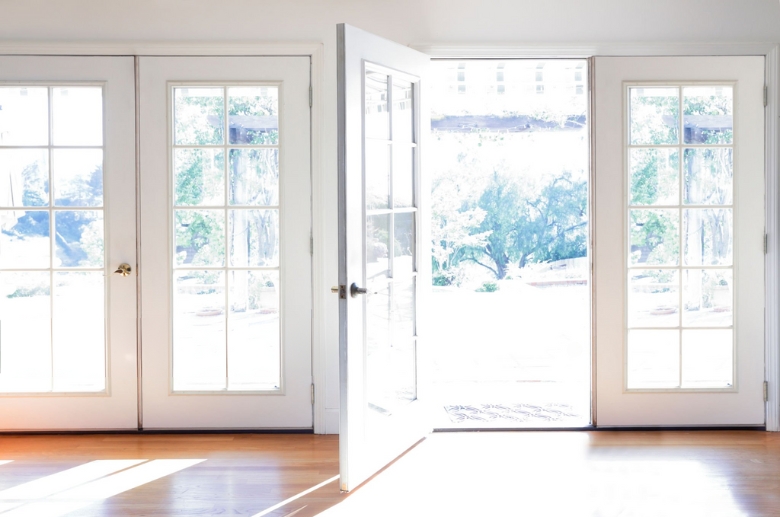
French doors are known for their glass panels, which flood spaces with natural light. Consider the orientation of your garage and the amount of light you want to introduce into the space.
When maximizing natural light with French doors, consider your garage’s orientation to the sun:
If it faces east or west, you’ll get direct sunlight during mornings or evenings, respectively. North-facing garages receive consistent but softer light, while south-facing ones get the most sun throughout the day.
If your garage receives intense sunlight, you might consider tinted or frosted glass doors to reduce glare while allowing natural light to pass through. The goal is to choose French doors that provide the desired light and warmth, enhancing the space’s ambiance and utility.
3. Size and Dimensions
The size of the French doors should match the existing garage door opening for a smooth conversion. You might need to order custom sizes depending on your garage structure.
Standard French doors are typically available in sizes ranging from 5 to 8 feet in width and 6 to 8 feet in height. They are commonly available in increments of 2 to 3 inches for width, allowing some flexibility for different spaces.
However, custom-sized French doors may be necessary if your garage opening doesn’t align with these standard sizes. This ensures a perfect fit and a seamless conversion from your existing garage door opening to the new French doors, maintaining aesthetic appeal and functional integrity.
4. Energy Efficiency
Look for features like double-glazing or weather stripping to maintain energy efficiency, which is especially important if you’re converting your garage into a living space.
Double-Glazed French Doors
Double-glazing means that the door has two layers of glass with a space between them. A double-glazed door significantly reduces heat loss and helps maintain a consistent temperature inside. This feature is vital in both hot and cold climates, as it minimizes the need for heating and cooling.
Weather Stripping
Weatherstripping, on the other hand, seals gaps around the door to prevent drafts, further aiding in temperature regulation and reducing energy bills.
5. Cost
The cost of French doors is usually between $400 and $3,000; however, the cost varies significantly based on the base materials, styles, and customization. Materials like solid wood or high-quality composite are generally more expensive due to their durability and aesthetic appeal. Customized designs or unique styles, such as intricate glasswork or non-standard sizes, also add to the cost.
More affordable options typically include standard-sized doors made from materials like vinyl or aluminum, which offer functionality without the higher cost of premium materials. Remember, the overall cost will also include installation and any structural modifications needed for your space, so consider these factors when setting your budget.
6. Maintenance
When considering the maintenance requirements for garage doors, the material of the door plays a significant role. Different materials have varying maintenance needs, affecting your choice depending on how much time and effort you’re willing to invest in upkeep.
- Wood Garage Doors are high maintenance and require regular painting or staining. They are ideal for aesthetic appeal but require effort in upkeep.
- Steel Garage Doors: Low maintenance, occasional cleaning and rust checks. Durable and practical for most homeowners.
- Aluminum Garage Doors: Similar to steel in low maintenance, they have the added benefit of being lightweight and rust-resistant.
- Fiberglass Garage Doors: Require Moderate maintenance, resistant to rust, but may fade and need refinishing. Offers a wood-like appearance.
- Vinyl Garage Doors: Require Little to no maintenance, resistant to dents and fading. Best for hassle-free, long-lasting use.
Suggestion: If you prefer low maintenance, go with steel or vinyl. They offer durability and ease of care, which are suitable for most homeowners. For a balance of beauty and upkeep, consider fiberglass.
7. Security

When choosing French doors for your garage, security is a crucial concern.
A multi-point locking system secures the door at several points along the frame and is an excellent choice for enhanced security. Alternatively, deadbolt locks, particularly double-cylinder deadbolts that require a key on both sides, offer robust protection.
To further bolster security, consider reinforced or tempered glass for any glass panels and add security bars or grilles, especially in less visible areas. These features collectively ensure a higher level of security for your French doors.
Advantages And Drawbacks Of Replacing A Garage Door With French Doors
When considering replacing a garage door with French doors, it’s essential to weigh the advantages and drawbacks to make an informed decision
Advantages
Replacing your garage door with French doors has the following advantages:
- Enhanced Aesthetic Appeal: French doors add a sophisticated and stylish charm to your home. Their classic design with multiple glass panels and elegant frames enhances the beauty and allows natural light to flood into your garage.
- Increased Functionality: This replacement creates a versatile space that can serve various purposes, such as an extension of your living area, a home office, gym, studio, or playroom, adding practicality to your home.
- Improved Home Value: French doors can significantly enhance the value of your property. The added functionality and curb appeal make your home more attractive to potential buyers, potentially leading to a higher selling price.
Drawbacks
Replacing your garage door with French doors has the following disadvantages:
- Space Requirements: French doors require more space to open fully. You’ll need to ensure that your home allows enough room for them to open comfortably, which might involve rearranging your garage space.
- Higher Costs: French doors are generally more expensive than standard solid doors. This cost factor is essential, especially if you are undertaking other renovations.
- Complex Installation: The installation process for French doors is complex and often requires professional assistance. Most sellers provide installation services, though this contributes to an increase in the overall expense.
- Style Compatibility: While aesthetically pleasing, French doors may not suit every home’s design style. Specifically, homes with ultra-modern or minimalist architecture might find French doors too traditional or ornate.
- Energy Efficiency: French doors are known for their poor energy efficiency ratings. The joining area is prone to air leakage and water intrusion, which can increase heating and cooling bills. They also need regular maintenance in areas with heavy rainfall.
Homeowners should also remember that French doors generally provide less security than traditional garage doors. Their construction, materials, exposure to weather, and abundance of glass make them more vulnerable to forced entry than a metal overhead door.
Similarly, industrial-style homes, which often feature raw materials and a more rugged aesthetic, may not complement French doors’ refined and detailed nature.
DIY vs. Professional Garage Door Conversion to French Doors
Deciding whether to embark on a DIY project or hire a professional to replace a garage door with French door hinges on various factors.
Here’s a comparative look at both options:
DIY Conversion
Let’s look at the benefits and disadvantages of DIY conversion:
Pros:
- Can save $1,000 to $1,500
- Provides a sense of accomplishment
- Flexibility in working at your own pace
- The opportunity to learn and acquire new skills
Cons:
- Requires a significant time investment (2 to 4 days, depending on your expertise)
- You’re more likely to make mistakes without professional expertise
- You’ll need to purchase or rent tools such as drills, pliers, winding bars, ladders, vice grips, etc.
- It can get stressful and complex
- You might hurt yourself or damage the property
Professional Conversion
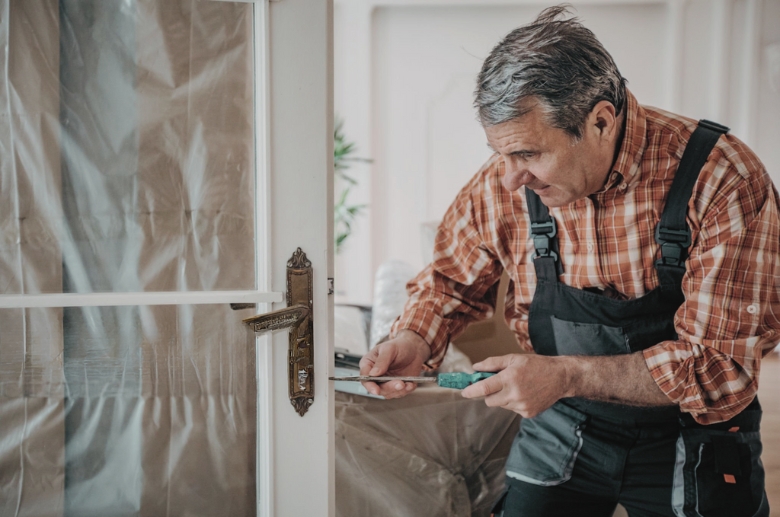
Now, let’s see the benefits and disadvantages of professional conversion.
Pros:
- Expertise and experience ensure quality
- The project gets completed faster
- Often includes warranties or guarantees
- Peace of mind
An often overlooked benefit of hiring a professional installer is access to commercial-grade building materials unavailable to homeowners. Professionals are able to source durable, resilient products designed for longevity, like impact-resistant doors, reinforced framing, and tempest glass.
Cons:
- Higher cost ($1,000 to $1,500)
- Need to schedule and accommodate contractors
Connect With A Garage Expert
Connect with local experts, Compare quotes, Get the best price.
While professionals generally have more capabilities than DIY installers, skill level varies greatly between individual contractors and companies. Research, reviews, and referrals are important to vet potential hires thoroughly. Even experienced firms can encounter issues like staff turnover or take on more jobs than they can handle well.
Your choice should align with your skills, budget, and comfort with home improvement tasks. If you have the necessary experience, tools, and enough time, a DIY approach might be fulfilling. However, professional expertise might save time and avoid costly errors for complex or large-scale conversions.
Cost of Replacing Garage Doors With French Doors
When considering replacing a garage door with French doors compared to installing a new garage door, various factors contribute to the overall expense. Below is a comparison table that outlines the potential costs involved in both options:
| Cost of Replacing with French Doors | Cost of New Garage Door Installation | |
| Material Cost | $400 – $3,000 (French doors) | $400 – $1,100 (Door, Tracks, Hardware) |
| Installation Cost | $400 – $700 (Installation) | $150 – $700 (Installation Labor) |
| Additional Framing Work | $200 – $400 (If required) | Not typically required |
| Miscellaneous Supplies | $50 – $200 | Included in installation |
| Old Door Removal | Varies (Included in some cases) | $50 – $250 (Often included) |
| Total Cost (Approximate) | $1,200 – $5,000 | $550 – $1,800 |
Final Thoughts
If you want to replace a garage door with French doors, that’s a good idea, as it will enhance the aesthetic appeal, increase functionality, and potentially improve the overall value of your home.
However, before leaping, you should know that French doors require more space to open, come with higher costs, can be complex to install, may not fit every home style, and are less energy-efficient.
Since the project involves many moving parts, it’s best to consult a professional garage door service to help you make the best decision and bring your dream project to life.



